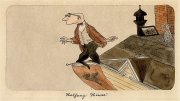Linda Greenhouse ’68 covered the Supreme Court for the New York Times for 30 years (winning a Pulitzer Prize for her work). Now, continuing to observe the court from a post at Yale, she has crafted a quick history of the year of Amy Coney Barrett’s confirmation to succeed Ruth Bader Ginsburg, which capped a three-decade project to move the judiciary in a conservative direction—and outlines the stakes in pending cases. Justice on the Brink (Random House, $28) is, in a way, an account of the politicization of a branch of government that has at least tried to appear apolitical. (Her book invites reading alongside The Authority of the Court and the Peril of Politics, by associate justice Stephen Breyer, LL.B. ’64, profiled in “A Workable Democracy,” March-April 2017). She obviously harbors doubts about the jurisprudence to come. From the epilogue:
It’s tempting to think of a single term as a snapshot of a fixed period in the Supreme Court’s life. A more accurate image is that of a series of frames in a moving picture in which members of the court continually navigate among past, present, and future, deciding cases they accepted during the previous term and adding new cases for decision in the next. The end of a term is…just a pause in a steady flow.
The death of the court’s leading liberal and her nearly instantaneous replacement by…Barrett, a conservative 40 years her junior, jolted the flow off course, up-ending expectations for the term that was just getting underway in the shadow of a dangerous pandemic and a contested national election. Cases aleady accepted for decision—health care, religion—under one set assumptions suddenly looked different, either more hopeful or more dangerous, depending on one’s perspective. New petitions the court might have passed over—guns, abortion—now tempted.…
In the end, it was not quite the term conservatives had hoped for, nor the term that liberals had most feared. A Gallup poll released in late July revealed an unexpected turn in public opinion. What was surprising was not that overall approval of the court’s performance had dipped to just under 50 percent, down from 58 percent a year earlier; all institutions of government took a hit during a tumultuous year. What was startling was that after all that had happened, Democrats and Republicans shared as identical view of the court. This a sharp contrast to just a few years earlier when…midway through Donald Trump’s term, Republican approval of the court soared to 72 percent while Democratic approval fell to 38 percent. The change was “notable,” the Gallup analyst wrote, perhaps reflecting the particular mix of rulings that “may have helped keep Republicans from viewing the court as a conservative ally, or Democrats from perceiving it as too ideologically extreme.” But he added: “Today’s symmetry in Republicans’ and Democrats’ ratings of the court may be put to the test in the court’s next term.”
Everyone had something to hope and something to fear from a court on the brink.









